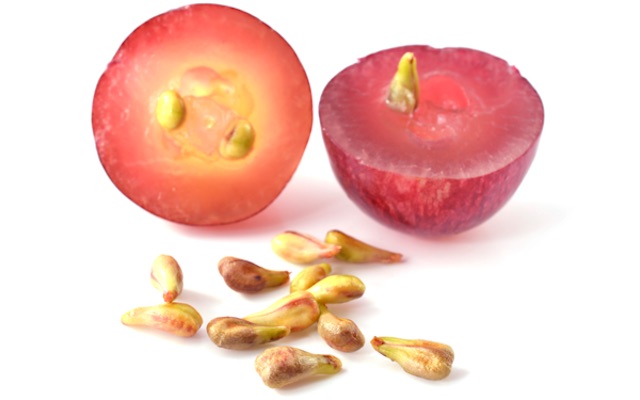Posted: Apr 01, 2018

The process of making wine wastes around a quarter of the grape, discarding stalks, seeds and skins to landfill. Now researchers have found a way to repurpose that once useless residue.
SECOND CAREER: Grape waste could have a second life in other foods and in cosmetics.
Researchers at the University of Lincoln Nebraska have found useful commercial applications, such as prolonging the shelf life of fatty foods, for wine leftovers.
The global wine industry produces about 14 million tons of pomace, the waste from wine production, every year, according to the Food and Agriculture Organization of the United Nations, and winemakers struggle with what to do with it.
“Large amounts of grape waste may be detrimental to the environment,” Changmou Xu, Ph.D., the head of a team of researchers at the univesity. said. This waste can cause surface and ground water pollution because pesticides and fertilisers used on the grapes can leach into the environment.
Dr Xu, who presented his work at a meeting of the American Chemical Society, added that the soil can become more acidic because of the pomace’s low pH. Grape waste left in landfills can even contribute to the spread of diseases because it can attract flies and pests,.
Xu’s group at the University of Nebraska-Lincoln wants to rebrand grape waste as a renewable resource, using it to produce antioxidants, grape oils and dietary fibres for health products. Co-opting pomace for commercial use is a one-two punch to winemakers’ waste problems. Not only could it increase the economic value of the grape and wine industry, it could also minimise environmental contamination, Xu said.
Pomace can be used as compost or fertiliser, and some winemakers have even produced a weaker, “second wine” by soaking waste grape skins in water and fermenting the mixture.
But grape pomace is also a rich source of natural antioxidants such as proanthocyanidins, anthocyanins and ellagic acid. These antioxidants bind to free radicals — toxic byproducts of oxygen metabolism that can harm the body — so those radicals can’t bind to and damage cells. These pomace ingredients, as well as grape seed oil, have been used in dietary supplements, pharmaceuticals and cosmetics.
Using a holistic approach, Xu’s team is identifying optimal technologies to extract, separate and identify nutrients from grape pomace, and then they will use those nutrients in commercial products. The technologies also must remove any pesticides that would have been used on the grapes.
The group has collaborated with biologists to investigate whether polyphenols found in pomace are effective against foodborne pathogens like E. coli and Salmonella. They also have worked with physiologists to study how supplementing sows’ diets with grape pomace from late gestation through lactation would affect the gut health, pre-weaning survival and growth in young piglets.
“We are also developing some applications in food, aiming to substitute artificial antioxidants with natural antioxidants from grapes for a ‘clean label’ food with only natural ingredients,” Xu said. The researchers separated the phenolic compounds from the other components of the pomace, including any pesticides that were used on the grapes, and added them to popular foods high in fat, like mayonnaise and ranch dressing.
Before adding the phenolic compounds, the team tested them to be sure they met safety requirements. They found that these compounds significantly inhibited lipid oxidation, extending the fatty foods’ shelf life, especially when the samples were exposed to a warm temperature. Xu said that in a previous study, his team used polyphenols to reduce acrylamide formation in potato chips by 60 per cent.
“We are continuing to enhance efficiency of this inhibition and aim to make the phenolic compounds’ performance comparable with that of ethylenediaminetetraacetic acid (EDTA), which is an artificial antioxidant,” Xu says.
Although EDTA is widely added to foods, cosmetics and medicine and is safe to use, it is not a very label-friendly ingredient in the current consumer climate. People are looking for food labels listing natural ingredients, Xu says. And grape pomace could provide one way to fulfill that need.
Source: Newfoodmagazine.com
March 22, 2018
Go-Wine's mission is to organize food and beverage information and make it universally accessible and beneficial. These are the benefits of sharing your article in Go-Wine.com


The Wine Thief Bistro & Specialty Wines is a locally owned small business in downtown Frankfort, IL offering world class wines in a relaxed, casual gathering spot for friends and family. Offering world class virtual tastings and touchless carryout.
https://www.twtwineclub.com/aboutus
Go-Wine 25 Great Wineries in US selection prioritizes quality, value and availability.
www.go-wine.com/great-wineries-in-america
Tasting wine is a nice experience, but visiting the places in which wine is made is a magic moment. Available in New York City for touchless pickup.